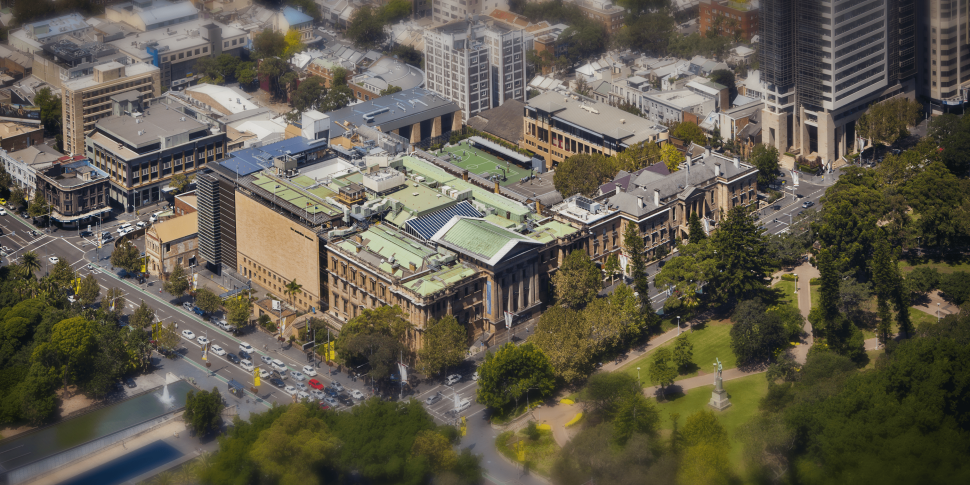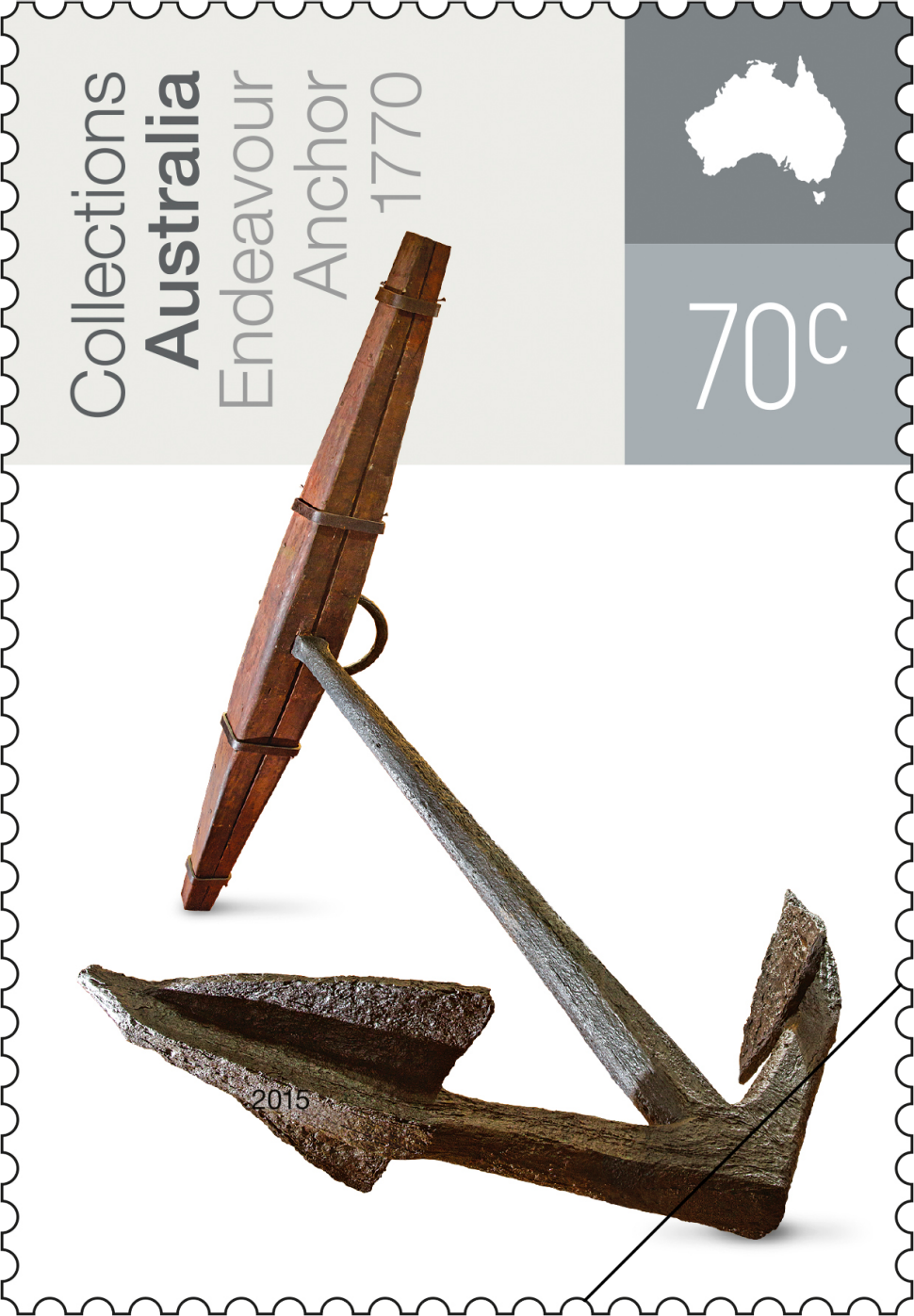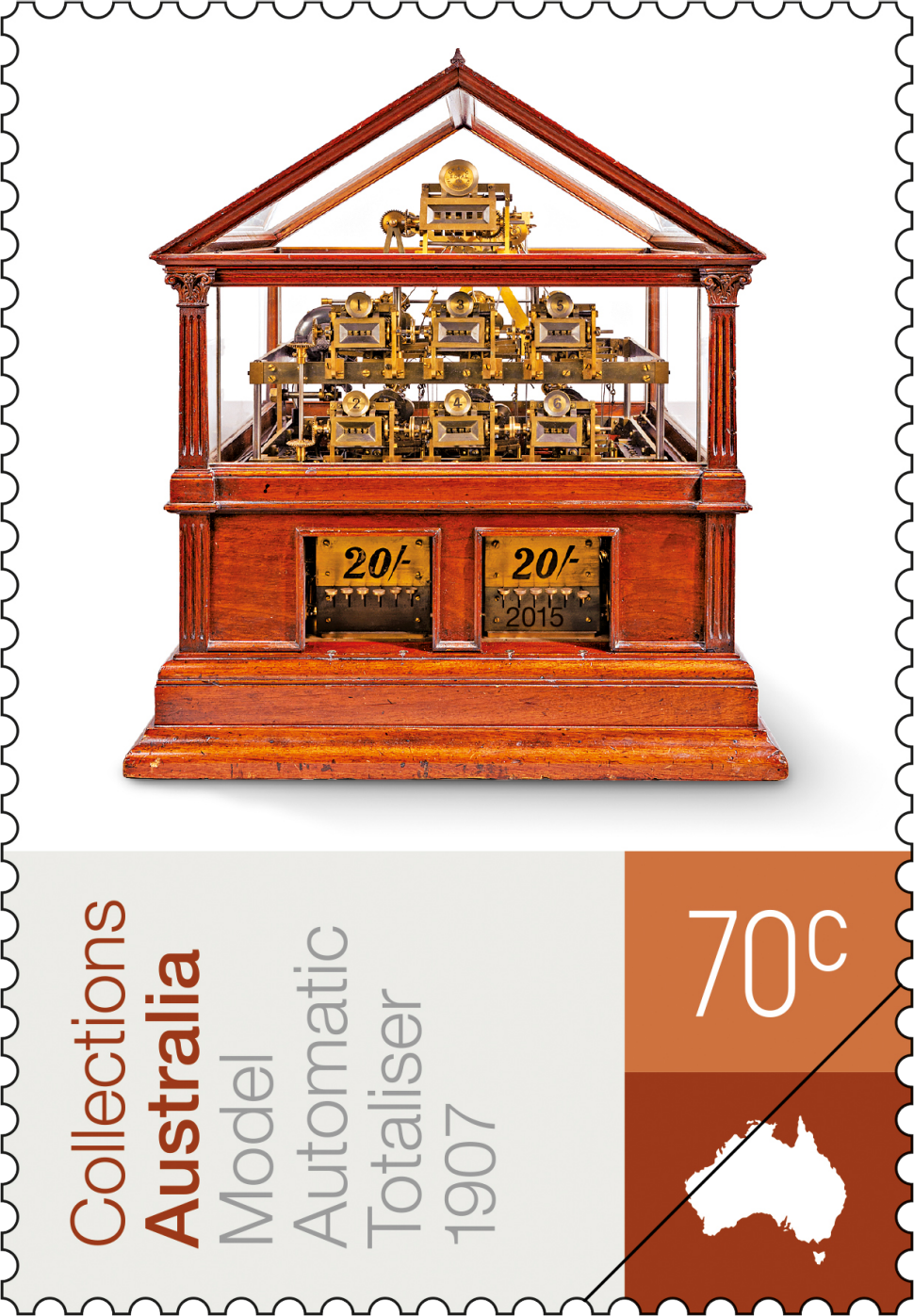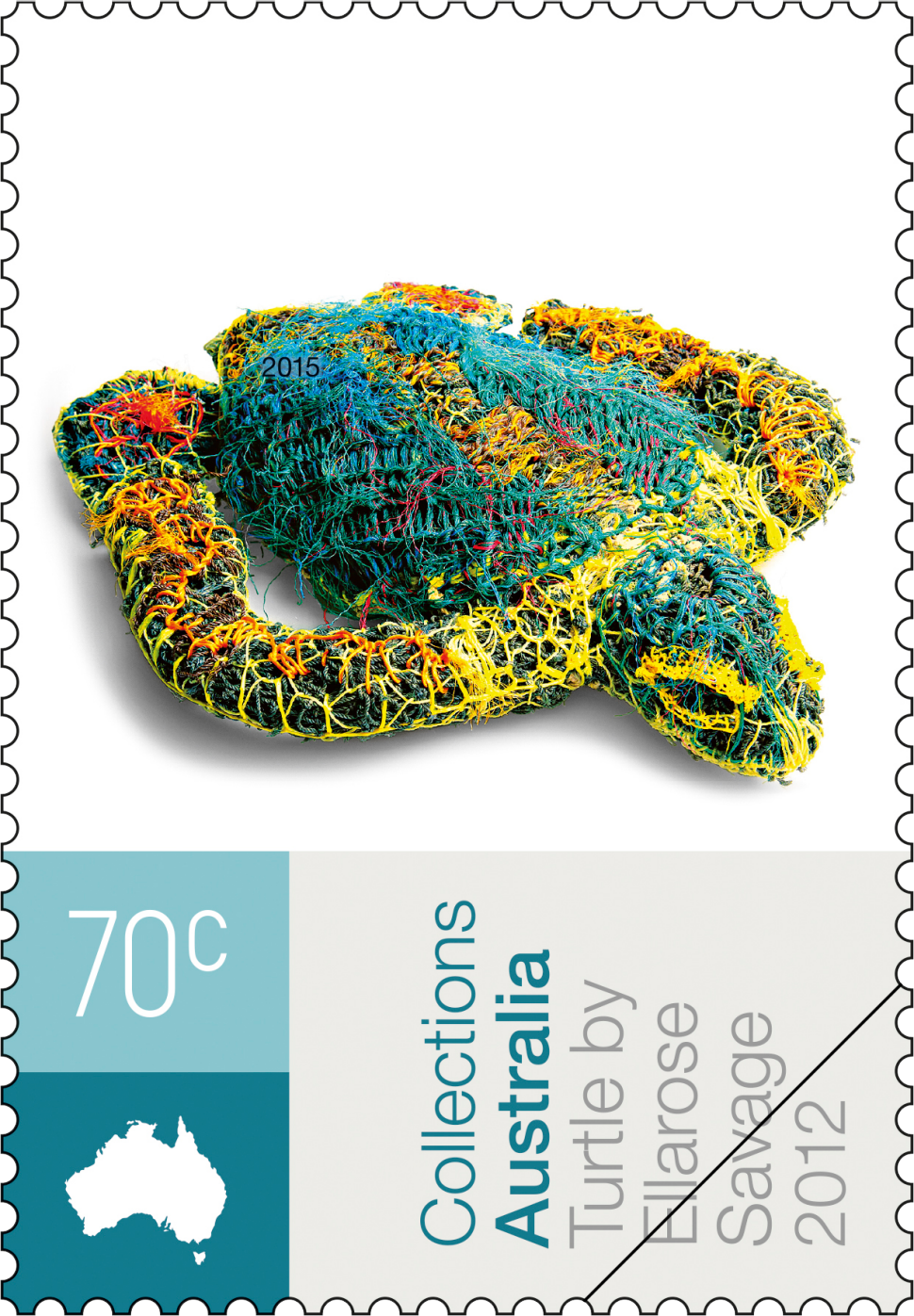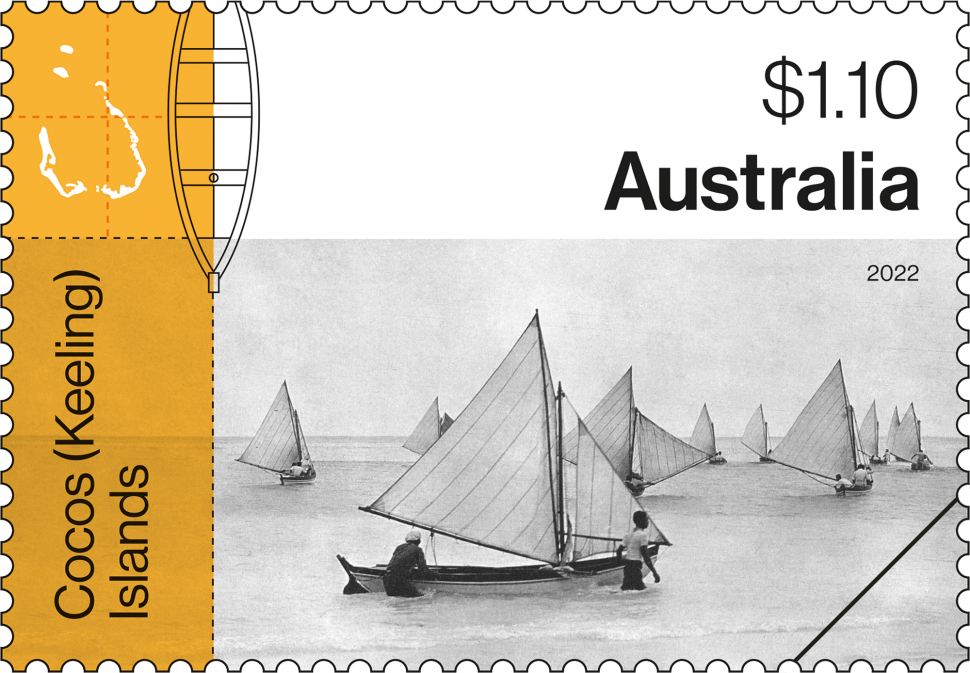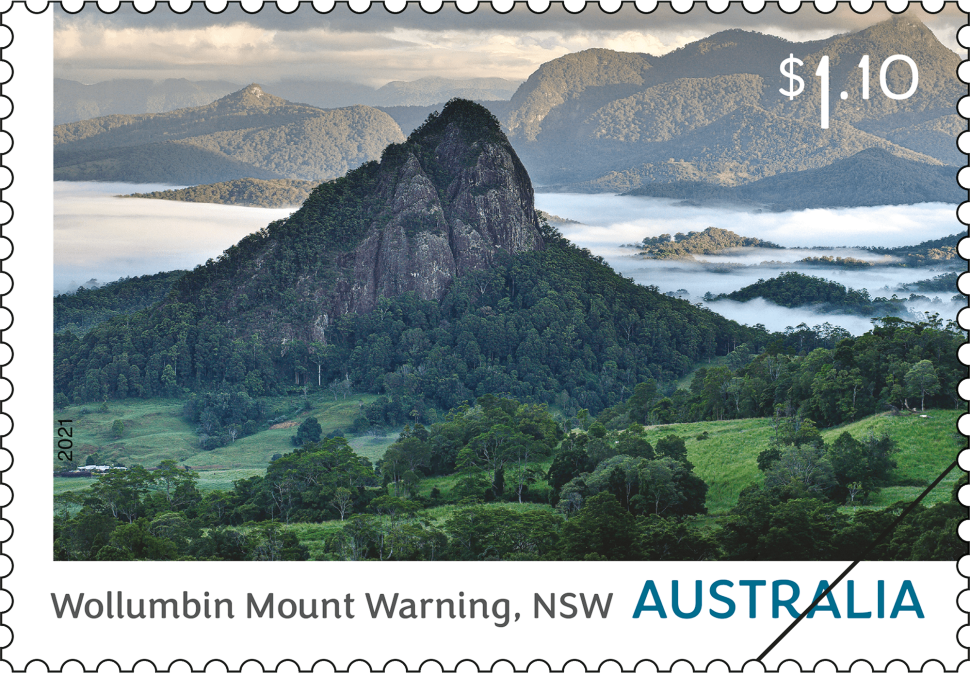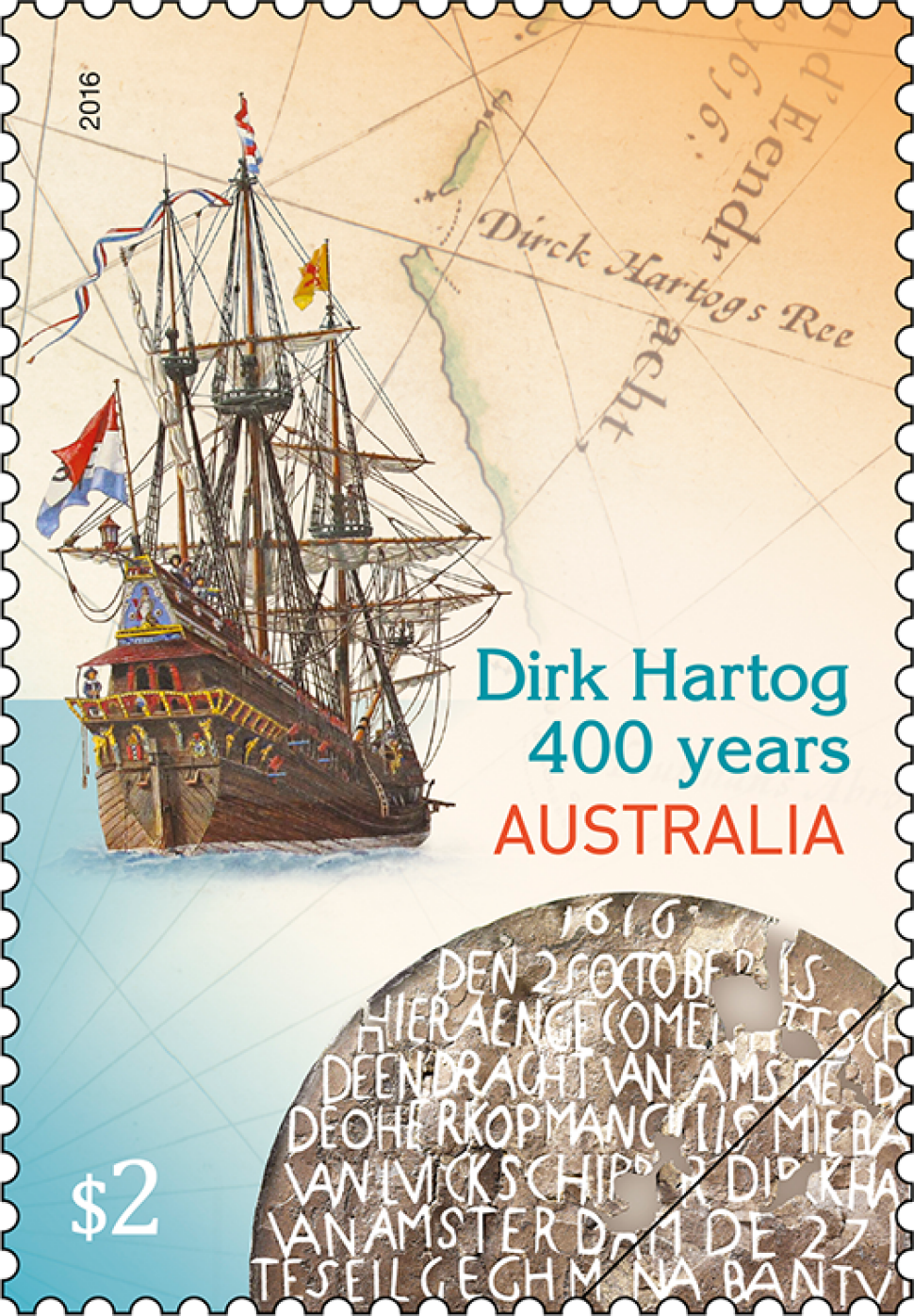Museums are essential to the heritage of any country, region and town. These treasure houses are fundamental to collecting, preserving and exhibiting objects and stories; to shaping a sense of belonging; and to generating research that builds knowledge and enables technological innovation and development. Museum collections vary widely in their focus. In Australia they might been seen to fall loosely into the areas of contact and colonial history, social history, Indigenous culture and ethnography, natural history, physical sciences, and design and technology; but they cover many areas in between.
This stamp issue focuses on collections rather than on museums as places or institutions. The collection is intimately connected with the museum, embodying practices of classifying, ordering, conserving and remembering; ‘The collection’, it has been said, ‘is a unique bastion against the deluge of time’. The objects featured in this stamp issue are representative of different collections and collecting areas. They also speak to specific cultural contexts and historical moments and illuminate particular stories, themes and issues. These are European exploration and early cross-cultural contact (in the anchor of the Endeavour), the Australian gold rushes (in the Welcome Stranger nugget), design and technological invention (in the automatic totaliser), and Indigenous culture and responsiveness to a pressing environmental hazard (in the ghost-net artwork titled Turtle). Together they form a temporal arc from the 18th to the 21st century respectively.
The stamp design takes an object-based approach to the subject. Using contemporary photographs, the designs highlight the aesthetic qualities of each object, conveying an aura of the cultural value of each. To an extent, the stamps operate much like display cases, exhibiting the objects represented.
Designer
Gary Domoney is director of Visua, a Melbourne-based visual communication and brand strategy agency. Gary has designed many stamp issues for Australia Post, including Landmarks: Australian Modernist Architecture (2007), World Youth Day (2008), Centenary of Compulsory Enrolment to Vote (2012) and the joint issue with Germany recognising naturalist and explorer Friedrich Wilhelm Ludwig Leichhardt (2013).
Products released in this issue
- Stamp (4 x 70c)
- Minisheet
- Covers (blank pictorial, minisheet, self-adhesive and gummed)
- Stamp pack
- Maxicard (4)
- Roll of 100 s/a
- Strip of four
- Collector pack
- Gutter (10 x 70c) design
Technical specifications
- Issue date
- 19 May 2015
- Issue withdrawal date
- 30 November 2015
- Denominations
- 4 x 70c BL4
- Stamp design
- Gary Domoney, Visua
- Product design
- Gary Domoney, Visua
- Printer
- McKellar Renown
- Paper - gummed
- Tullis Russell
- Paper - self-adhesive
- B90
- Printing process
- Lithography
- Stamp size
- 26.5mm x 37.5mm
- Minisheet size
- 135mm x 80mm
- Perforations
- 13.86 x 14.6
- Sheet layout
- Module of 50 BL4, printed gutter
- FDI postmark
- Collector (gunning), NSW 2581
- FDI withdrawal date
- 17 June 2015
In July 1770, Captain James Cook landed at what became known as Endeavour River, Queensland. This unscheduled stay was to repair the hull of the HMB Endeavour, which struck an outcrop of the Great Barrier Reef during Cook’s navigation of the east coast.
For James Cook, the possibility of adding further discoveries to the expedition’s already impressive list of achievements underlay his decision to sail home via the east coast. He spent a little over four months sailing between Port Hicks, on the south-east corner of the mainland, to Possession Island, in the Torres Strait. The journals of those on board record a nightmarish 24 hours that followed the ship striking the reef; the sails were got down and six cannons, thousands of gallons of water and tons of ballast were jettisoned to lighten the ship, and everyone took their turn manning the three pumps to clear the water flowing in through the gash in the hull. At high tide the next evening the ship was winched off the coral and the Endeavour slowly made for the shore. The small bower anchor could not be retrieved, and was left behind.
On the morning of 17 July, the ship entered the mouth of the Endeavour River and work began repairing the damage. Nearly seven weeks later, the Endeavour was ready to sail again; the health of the crew had been restored, food supplies secured and extensive collections of natural history specimens gathered, including the improbable kangaroo. And unlike the clear rejection of their overtures towards to the people living at Botany Bay, relations established with the Guugu Yimithirr people had been positive, although Cook’s refusal to share with his hosts any of the turtles his men had captured caused offence. After several false starts, the Endeavour re-entered the waters of the Great Barrier Reef on 4 August. Five days later, having proved the existence of the Torres Strait, Cook climbed to the summit of Possession Island and claimed the east coast of the Australian continent for Britain.
In 1886, the Working Men’s Progress Association of Cooktown proposed a memorial to Captain Cook, which they hoped to surround with the six jettisoned cannon, if they could be recovered. This first effort at locating and salvaging relics from the Endeavour was unsuccessful, as were searches in 1966, 1967 and 1968.
In 1969, an expedition mounted by the Philadelphia Academy of Natural Sciences employed a magnetometer and located four of the cannon and some iron ballast. Following the successful use of the magnetometer, an expedition to recover the Endeavour’s bower anchor was undertaken in late 1971. On the first sweep of the designated search area with the magnetometer on 17 December, a large anchor-sized magnetic anomaly was located in 13.5 metres of water; Cook’s personal journal had accurately recorded the anchor’s resting place. The wrought-iron anchor, with a shank of 3.9 metres and width of 2.24 metres, was excavated from under two metres of fine sand and coral debris. It was finally raised on 28 December 1971. The conserved anchor is now held in collection of the National Museum of Australia, but it is on permanent display in the James Cook Museum, in Cooktown, which operates under the auspices of the National Trust, Queensland.
Photo: Jason McCarthy/National Museum of Australia
The gold rushes in Australia began in 1851 and continued into the 1860s. In the fledgling colony Victoria the population swelled exponentially in a few short years, as ships brought hopeful gold seekers to the colony in great number. Ballarat was built on the wealth dug up from the Victorian goldfields, and that wealth also transformed the economy and cityscape of Melbourne.
On 5 February 1869, miner John Deason found what became known as the “Welcome Stranger” gold nugget near Dunolly, Victoria. Digging around the base of a tree, he came across the nugget just a few centimetres below the ground’s surface. He returned after dark with his partner Richard Oates, and together they unearthed the largest-known alluvial gold nugget ever found. At 66 kilograms (2284 troy ounces), it was too large for the bank’s scales to weigh, so it was broken into three on an anvil. It was later melted into ingots and sent to the Bank of England, which paid the miners nearly £10,000 (some $3–4 million today) for their find.
The replica of the Welcome Stranger nugget shown in the stamp design is in the collection of the Sovereign Hill Gold Museum. Made of plaster with a gold leaf surface, it is 70 x 50 x 18 centimetres in size.
Photo: Tony Long/Sovereign Hill Museums Association, Ballarat
George Julius built this model automatic totaliser in 1907–13 to demonstrate how his totalisator system worked. He had previously designed a cheat-proof mechanical vote-counting machine, which was sold to the State of New York. No buyers were found in Australia, so Julius searched for new applications for his calculator. Julius had been made aware of the difficulties and errors encountered by manually recording and calculating multiple bets and odds at racecourses, and saw how his vote-counting machine could be adapted to employ a precise, rapid, multi-user system that would eliminate the issues of manual on-course tote-betting.
The first full-scale mechanical totalisator was installed at Ellerslie racecourse in Auckland, New Zealand, in 1913. The tote was so large that it required a dedicated building to house it. This was the first automatic totalisator and replaced the fraught, labour-intensive manual system.
George Julius, born in Norwich, England in April 1873, immigrated with his family to South Australia 1884. They relocated to New Zealand five years later where Julius began a degree in engineering at the University of New Zealand. In 1896, Julius travelled to Western Australia to take up a role with the Government Railways. In his spare time, he designed and made his vote-counting machine, which was later adapted to become the totalisator.
Tote-betting, developed by Joseph Oller in France in 1867, became very popular at racecourses in Australia and New Zealand, as it offered a further dimension of natural odds to that of fixed-odds betting. In tote-betting the odds are not known until betting has closed, usually when the race starts. All the stakes are totalled and a house percentage removed. The remaining sum in the pool is then split between the winning tickets. The dividend pays less on the most popular horses as they attract the best odds of a win; however, if an outsider wins the race then the dividend paid is larger as there were fewer people backing that horse. Punters also preferred tote-betting as the odds were not set by the bookmaker – removing the perception that a bookie could manipulate a higher percentage for himself.
There were inherent errors due to the human element purveying tote-betting, and although George Julius was not the first to try and remedy this, his mechanical tote was the first successful design to be used by racecourses. Julius founded a company, Automatic Totalisators Limited (ATL) in Australia, and it dominated the design and supply of racecourse-betting equipment throughout the world. By 1936, ATL had automatic totalisators at 36 racecourses around the world.
Julius became the first chairman of the Council for Scientific and Industrial Research (now the CSIRO) in 1926. In recognition of his remarkable technological achievements and service to the country Julius was knighted in 1929 and he held many prestigious appointments on a number of company and charitable boards. He died in Sydney in 1946.
This model was donated to the Museum of Applied Arts and Sciences in 1953 by Automatic Totalisators Limited.
Photo: Michael Myers/Museum of Applied Arts and Sciences
Ghost nets are fishing nets that have been lost or discarded and drift with ocean currents. Many of these plastic nets float to the coastline of remote northern Australia and to the Torres Strait Islands, where they create an enormous environmental problem. The nets, which can be several kilometres in length, trap and kill huge numbers of marine animals each year and damage sensitive corals; they are a major threat for marine fauna and an ongoing problem for saltwater communities across the north.
Ghost nets were first sighted in northern Australia in the late 1980s and their environmental threat was immediately recognised. Indigenous communities began to clean up the fishing-industry rubbish, sometimes repurposing nets for screens, fencing, bags and the like. Many Indigenous fibre artists from saltwater communities now to turn the marine menace into engaging artworks. By making and selling the works, they raise both the incentive to collect ghost nets and awareness of the problem among the general public.
Turtle (2012), shown in the stamp design, was created by Ellarose Savage, an artist at Darnley Island (Erub) in the Torres Strait Islands. The work cleverly weaves together the threat and the threatened, with turtles being a chief victim of the killer nets. The turtle is not only an important resource in the Torres Strait Islands, but Nam (turtles) are also the totem of Ellarose. Her Turtle is held in the collection of the Australian Museum, which has several examples of ghost net art in its collection. Ellarose is represented by Erub Erwer Meta art centre, and her work has been shown in several group exhibitions.
Photo: Rebecca Fisher/Australian Museum
This content was produced at the time of the stamp issue release date and will not be updated.
